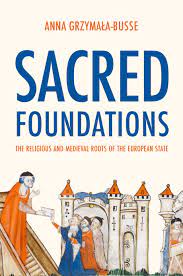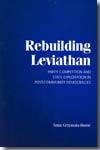Sacred foundations
the religious and medieval roots of the European state
- ISBN: 9780691245089
- Editorial: Princeton University Press
- Fecha de la edición: 2023
- Lugar de la edición: Princeton (NJ). Estados Unidos de Norteamérica
- Encuadernación: Rústica
- Medidas: 24 cm
- Nº Pág.: 256
- Idiomas: Inglés

How the medieval church drove state formation in Europe
Sacred Foundations argues that the medieval church was a fundamental force in European state formation. Existing accounts focus on early modern warfare or contracts between the rulers and the ruled. In contrast, this major study shows that the Catholic Church both competed with medieval monarchs and provided critical templates for governing institutions, the rule of law, and parliaments.
The Catholic Church was the most powerful, wealthiest, and best-organized political actor in the Middle Ages. Starting in the eleventh century, the papacy fought for the autonomy of the church, challenging European rulers and then claiming authority over people, territory, and monarchs alike. Anna Grzymala-Busse demonstrates how the church shaped distinct aspects of the European state. Conflicts with the papacy fragmented territorial authority in Europe for centuries to come, propagating urban autonomy and ideas of sovereignty. Thanks to its organizational advantages and human capital, the church also developed the institutional precedents adopted by rulers across Europe-from chanceries and taxation to courts and councils. Church innovations made possible both the rule of law and parliamentary representation.
Bringing to light a wealth of historical evidence about papal conflict, excommunications, and ecclesiastical institutions, Sacred Foundations reveals how the challenge and example of powerful religious authorities gave rise to secular state institutions and galvanized state capacity.
Chapter 1 The Medieval Setting
Chapter 2 Rivalry and Fragmentation
Chapter 3 Governing Institutions
Chapter 4 Law and Learning
Chapter 5 Parliaments and Representation







